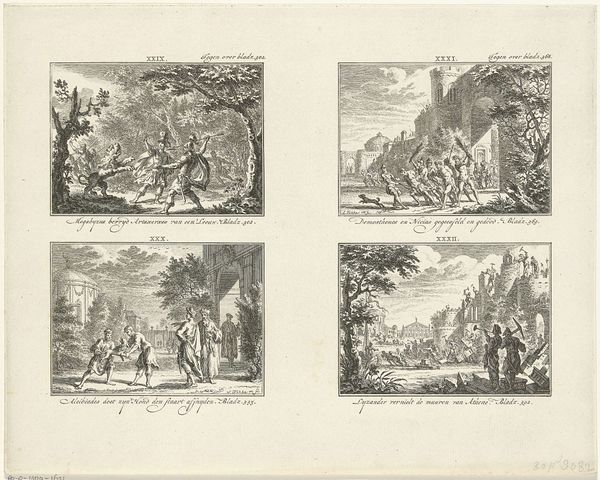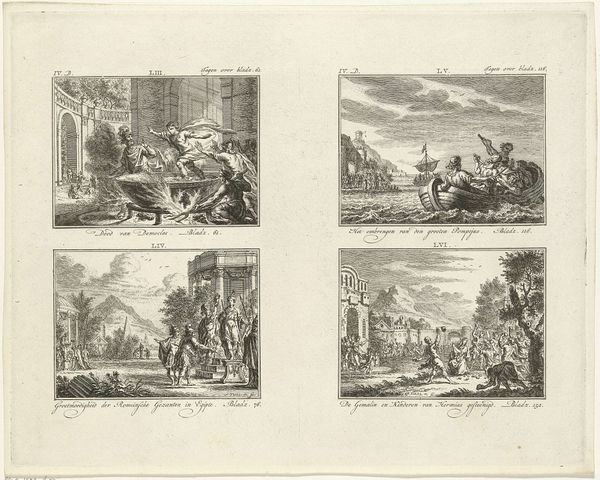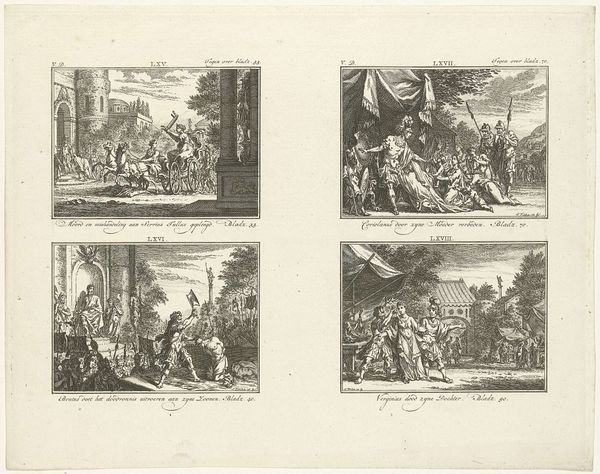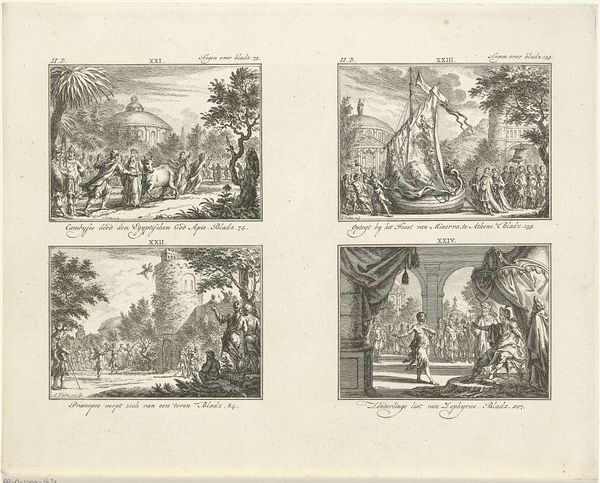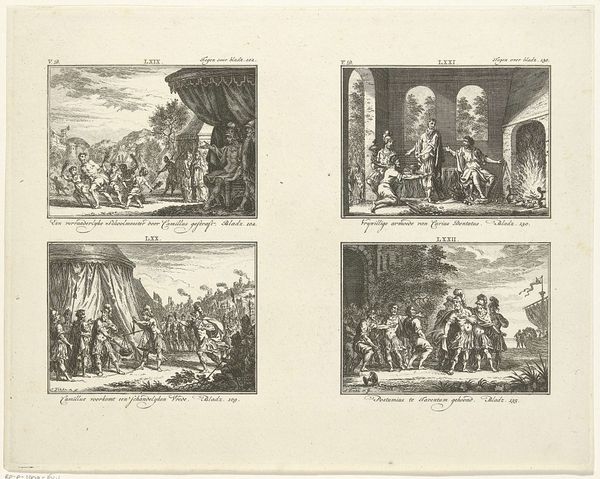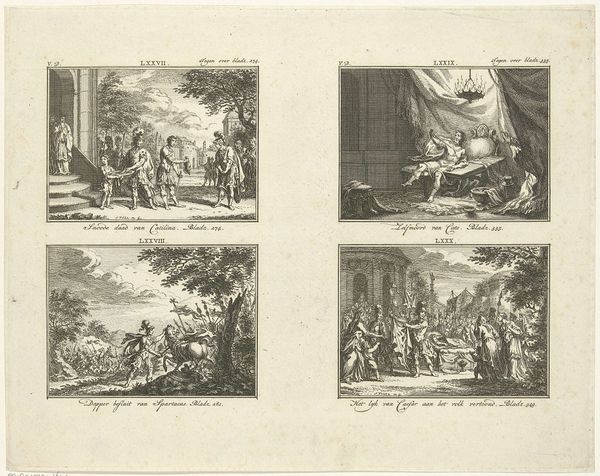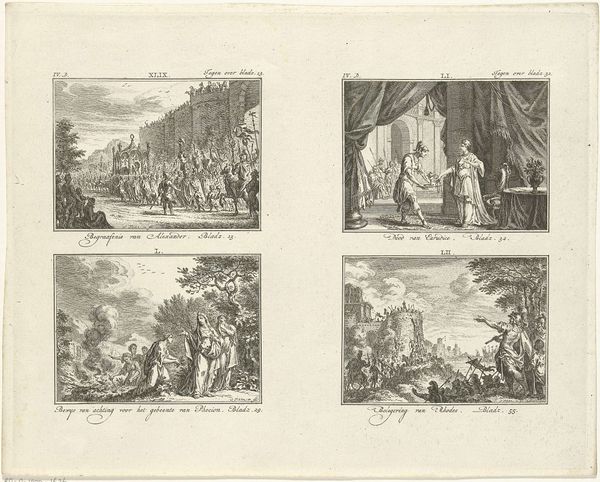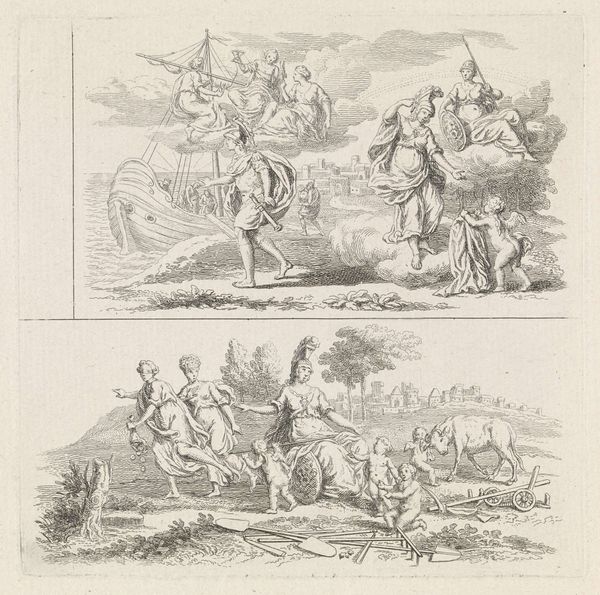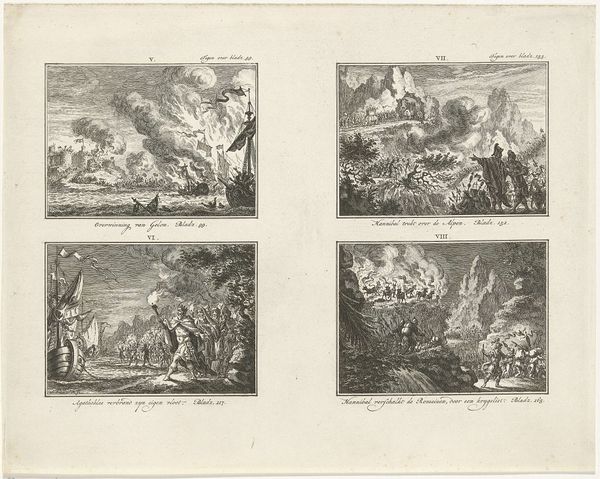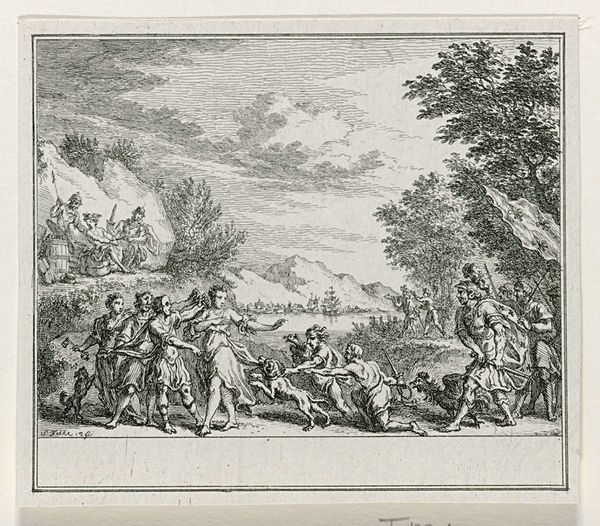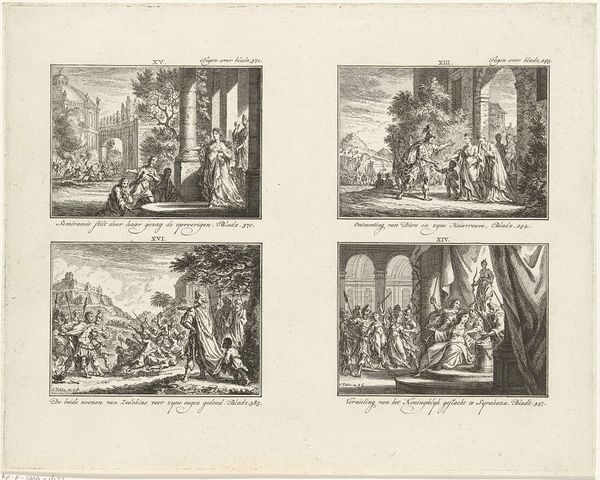
print, engraving
#
narrative-art
#
baroque
# print
#
classical-realism
#
figuration
#
history-painting
#
engraving
Dimensions: height 223 mm, width 282 mm
Copyright: Rijks Museum: Open Domain
Curator: Simon Fokke created this suite of engravings entitled "Four Scenes from Classical History" between 1722 and 1784. You can find it here at the Rijksmuseum. Four scenes, meticulously rendered. What's your first take? Editor: A grid of little dramas! It's all sharp angles and stark contrasts, but also somehow airy, like these are stage sets. A bit stiff, wouldn't you say? Like posed tableaux instead of organic movement. Curator: Indeed. Fokke embraced Classical Realism here. Each scene feels... didactic. In the upper left, for example, we see Demosthenes practicing his oratory. The narrative reads as moral instruction. Editor: And Demosthenes again in the upper right. His "Edelmogendheid," that untranslatable Dutch word... nobility, generosity, courage. But I'm thinking about the subtext, too. Who gets to be a hero in these classical tales? How are power and privilege being reinforced through these historical portrayals? Curator: It's hard to ignore the idealization. Consider the bottom two scenes: Alexander the Great. One depicting Alexander sparing his father's life, and another, the tale of Bucephalus, Alexander's horse, clearly highlighting prowess. Editor: Right, the celebration of heroic masculinity, tied to conquest and control. Alexander dominates, the horse submits. And the style only emphasizes it – look how his figure looms. I find myself pushing back against these established narratives, these visual celebrations of power. What voices are missing? Curator: The lack of female figures is telling. This isn’t unusual for history painting, but knowing that leaves a curious taste, I must agree. Fokke probably worked from other artists’ paintings and drawings in order to create this engraving, right? Editor: Absolutely, engravings often served that reproductive function at this time. These were narratives designed to be spread and consumed widely, each print an act of endorsement for a specific ideology of power and heroism. Curator: A lot to consider when encountering even these relatively small scenes. I hadn’t appreciated the implications quite like that before. Thanks. Editor: It's a necessary lens, I think. Lets us look past the surface, beyond the technique, and question the stories being told. Always good to re-interrogate history, I'd say!
Comments
No comments
Be the first to comment and join the conversation on the ultimate creative platform.
